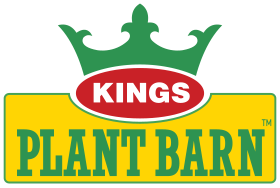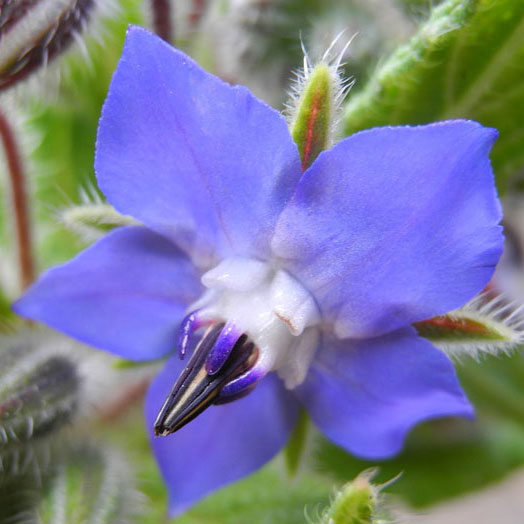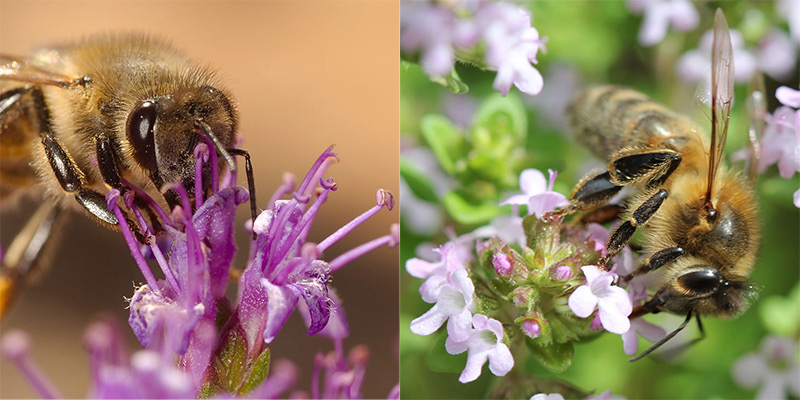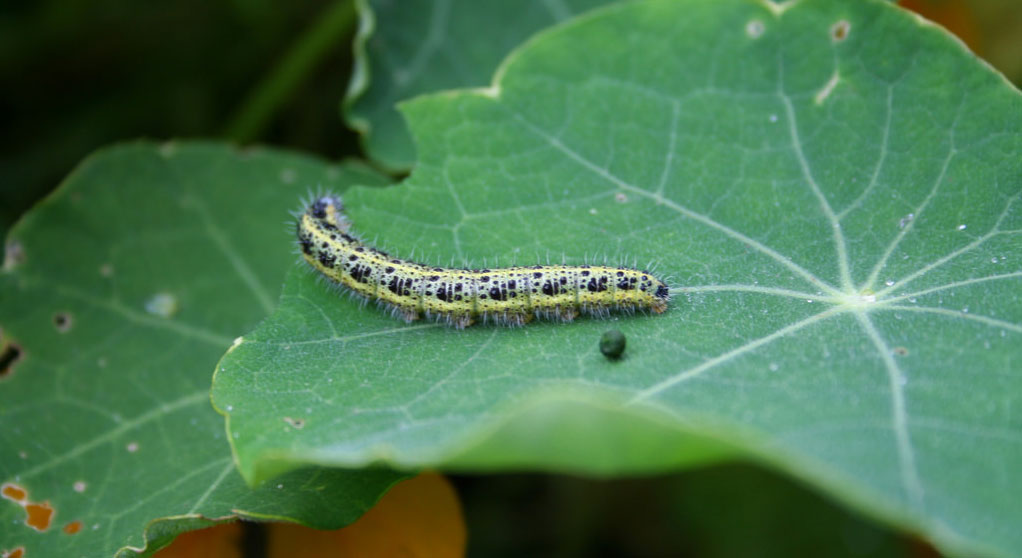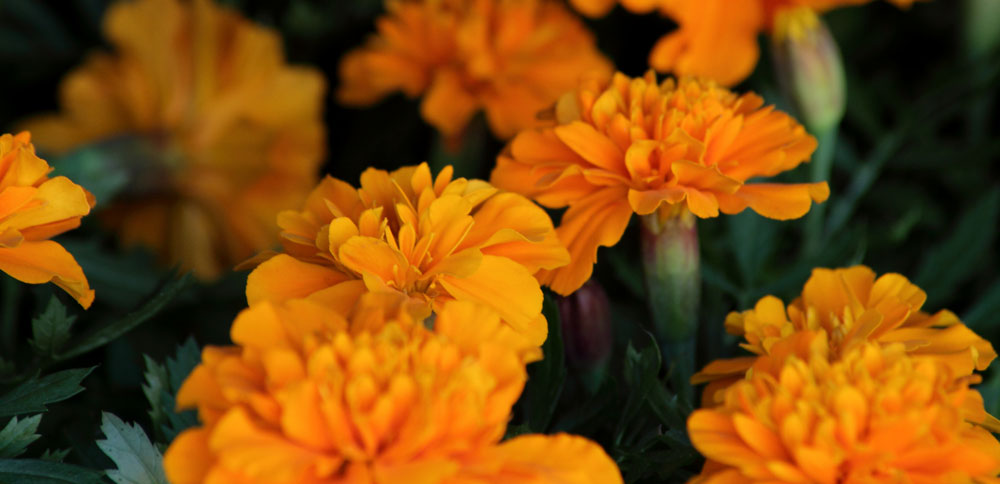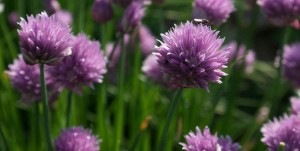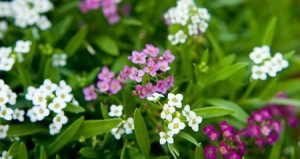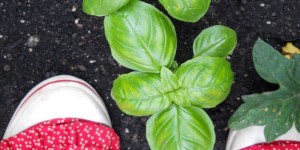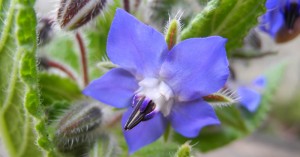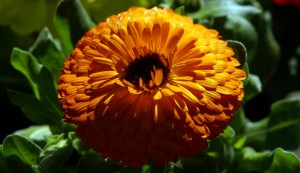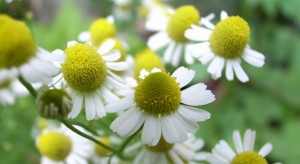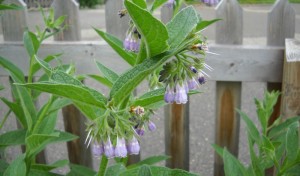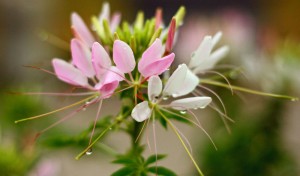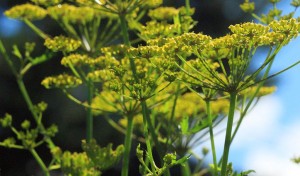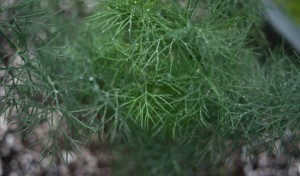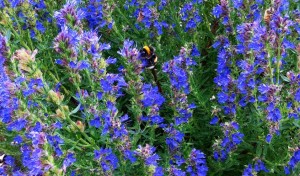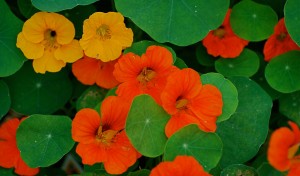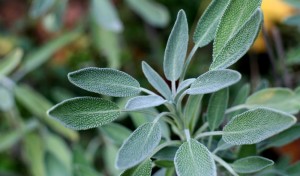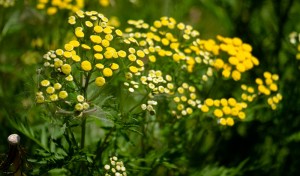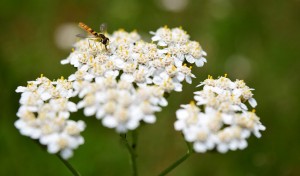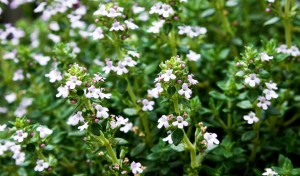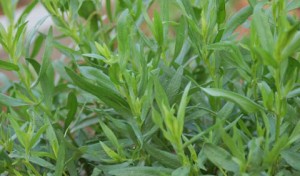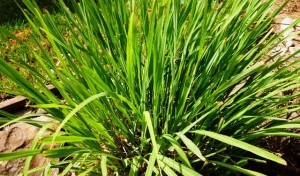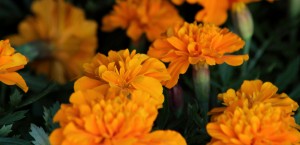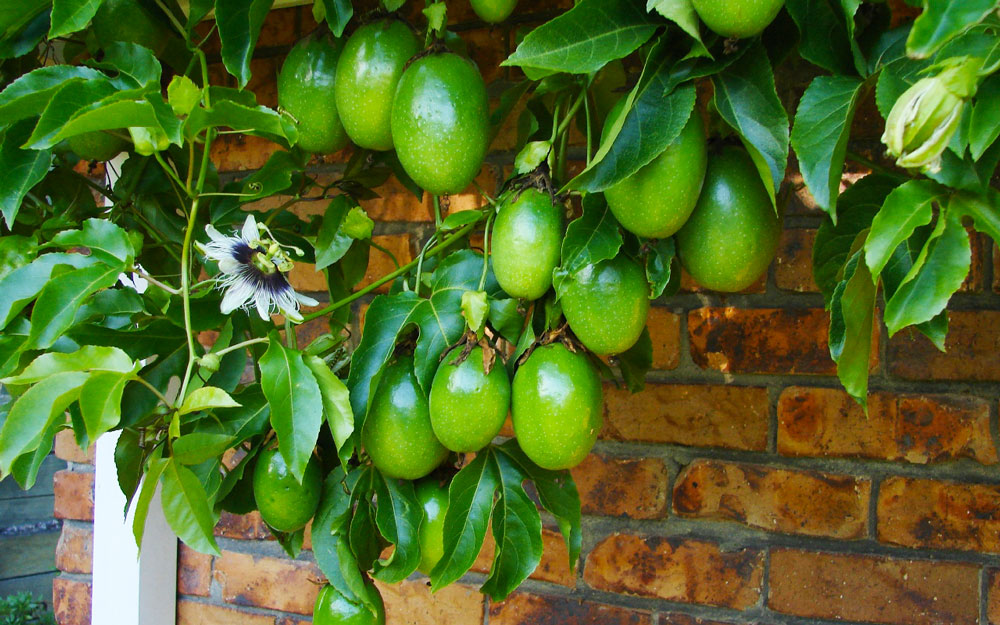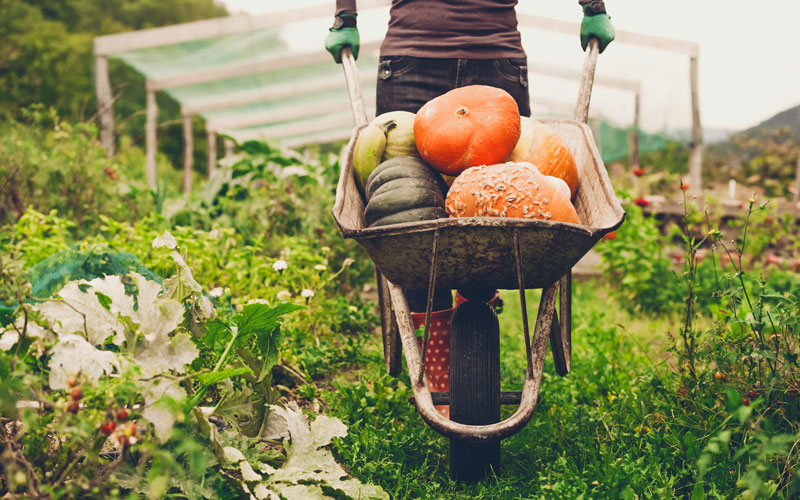Growing companion plants in and around your veggie garden is a great way to help keep your edible plants happy and healthy.
Growing companion plants in and around your veggie garden is a great way to help keep your edible plants happy and healthy.
Companion plants can help by:
1. Attracting beneficial insects.
Many flowering companion plants help attract beneficial insects. Some help pollinate plants, which often improves yields, while others are predatory, preying on a whole host of pest species.
Plants to attract beneficial insects: alyssum, anise hyssop, hyssop, sage, lavender, rosemary, cleome, thyme, echinacea, fox glove, phacelia, crab apples, and borage.
Click here to learn more about attracting beneficial insects
2. Acting as a ‘Sacrificial’ plants
These plants tend to get munched long before your precious veggies. Some can be hacked back regularly, and removed along with the pests, or you can spot spray effected plants with an organic pesticide such as Bugtrol. To reduce the impact on beneficial insects avoid spraying flowers and where possible spray in the evening.
Useful ‘Sacrificial’ Plants: Nasturtiums and Cleome
3. ‘Repellent’ Plants
Plant them near your veggies to lesson the likelihood of pest incursions. These plants through various means (including smells and the secretion of chemicals into the soil) help ward off various insect pests.
Plants that help repel pests include: Chives, Marigolds, Leeks, Lemongrass, Onions, Garlic and Pyrethrum.
4.Other reasons to grow companion plants
Some companion plants are also thought to benefit the growth of some veggies, and improve the flavour of various herbs or veggies. The mechanisms behind this aren’t really understood, but hopefully you find it helps. Chamomile in particular is thought to help sick plants recover and improve the flavour of herbs like basil and rosemary.
Companion plants can also be used outside of the veggie garden. By planting bee attractant plants around your fruit trees you can help improve pollination (and as a result increase yields), plant nitrogen fixing plants around your trees to improve soil fertility (and easy low maintenance option is clover), or plants that can act as a mulch (such as comfrey, which can also be used to make a great liquid feed).
Top Companion Plants
Alliums (garlic, onions, leeks, etc.)
Aside from being essential in the Kitchen, the plants of the allium family help repel/distract slugs, snails, aphids and carrot flies and are good to plant around fruit trees, tomatoes, peppers, potatoes, brassicas and carrots.
Alyssum
An attractive low growing honey scented plant. The white alyssum readily self seeds and fills up gaps in your garden. The plant draws in a wide range of beneficial insects including some that eat aphids.
Basil
Acts as an attractant for butterflies when it flowers, repels/distracts flies and mosquitoes, and also tastes great. It is a great herb to plant next to tomatoes for not only do they compliment each other taste-wise, but it is also believed to helps repel a variety of pests and diseases and improve the flavour of the tomatoes grown nearby/
Borage
Borage is a particularly good companion plant and is believed to help many plants grow better (particularly Strawberries, Tomatoes and Cucumbers). In addition, it acts as an attractant for predatory insects (that prey on pests) and pollinators such as bees and hoverflies.
Calendula
Providing beautiful edible flowers for months at a time, they help other plants by warding of beetles in the garden and discouraging nematodes (much like marigolds).
Chamomile
Aside from making delicious herbal tea, this pretty little herb acts as an attractant for hoverflies and predatory wasps (which will attack caterpillars and grubs). This plant makes a great companion for most plants in the garden, is believed to aid in the oil production of herbs like basil and mint (intensifying their flavor), and is sometimes known as the ‘plant doctor’ due to the effect that it has when planted near sickly plants.
Comfrey
While it is unwise to plant this in your veggie beds (as it can quickly become a pain due to its ability to begin growing from small bits of its roots) it is a useful and versatile plant to have in your garden. They are great to plant in your orchard under fruit trees, as they accumulate calcium, phosphorus and potassium (which is useful for fruiting) while they grow, and can easily be chopped back and used as mulch.
Their ability to accumulate nutrients also means that the leaves can be used to make a great (though smelly) liquid fertilizer for the garden, merely by leaving the leaves in water for a few weeks.
The flowers attract a variety of beneficial insects into the garden, and its leaves make an effective barrier against many otherwise frustrating weeds.
Cleome
This large, fast growing annual herb looks great and can help draw lots of beneficial insects into the garden, while also attracting shield bugs. Which may sound like a problem but, when planted in the right areas, this means that they can hopefully draw them away from your tomatoes, beans and any other plants that the shield bugs sometimes attack.
Parsnips
Let a few go to seed and you’ll find that Bees adore their flowers. Great in the garden or scatter some seed near your fruit trees to improve pollination.
Dill
Said to be a natural repellant against aphids, some caterpillars, and spider mites. When they flower, they can help draw a wide range of different beneficial insects into the garden. These properties come in handy when they are planted around brassicas, cucumbers corn.
Hyssop
This pretty herb attracts beneficial insects while deterring many harmful insects. It also attracts the white butterfly, which can help stop them laying their eggs on any cabbages or other brassicas that you have in your garden.
Nasturtiums
These plants attract white butterflies to such an extent that cabbages and other brassicas are often ignored. Though it is worth cutting the Nasturtiums back regularly to avoid having to many caterpillars in your garden. Both the leaves and the flowers are edible and can provide an attractive peppery addition to any salads you wish to make.
Sage
Repels aphids and attracts bees when it flowers. Many people also believe that when it is planted near brassicas (cabbage, kale, broccoli, etc.) it helps improve their taste.
Tansy
Helps to concentrate the potassium in your soil, which makes it great to plant near fruit trees, tomatoes, beans and squashes. Acts as a good general insect repellant deterring many non-nectar eating insects (including many of the ants that periodically invade my kitchen), while also attracting useful insects like bees. However, tansy is somewhat toxic to mammals, so take care around children and livestock.
Yarrow
Once known as herbal militaris as a result of it being used to staunch the flow of blood from wounds during antiquity, this pretty herb now has a variety of more peaceful uses in our gardens. It helps attract a variety of beneficial insects, including ladybirds, predatory wasps, and hoverflies, while repelling some other pests. It is also a useful addition to your compost heap, adding minerals as well as speeding the whole composting process up.
Thyme
This useful herb is also said to make an excellent companion for cabbages, eggplants and strawberries. It is also often credited with repelling a variety of insect pests that periodically invade our gardens.
Tarragon
Help repel an array of pesky pests and thought to improve the flavour of eggplants when they are planted nearby.
Lemon Grass
This easy to grow herb makes delicious herbal teas and can be useful when cooking Thai food. However its strong flavour also helps keeps some of the more annoying bugs away.
Marigolds
Marigolds are often planted as a border around other flowers or veges as their scent will help keep away many pests. The roots produce a powerful insecticide that will often deter pest in the soil (such as nematodes) for years after they have gone. The larger Mexican Marigold is even believed to help deter rabbits from coming into your garden.
